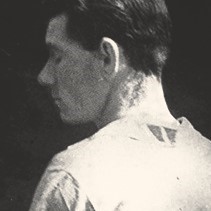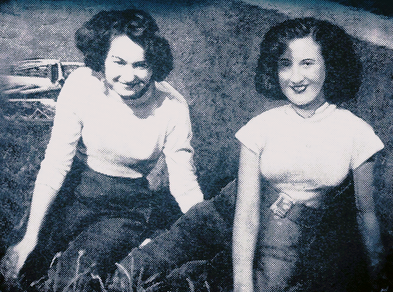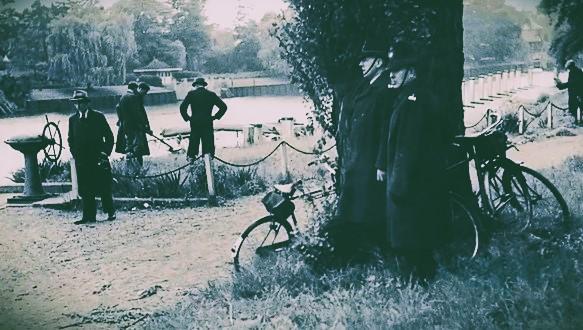
d: 1953
Alfred Charles Whiteway
Summary
Name:
Years Active:
1953Status:
ExecutedClass:
Serial KillerVictims:
2Method:
Bludgeoning / StabbingDeath:
December 22, 1953Nationality:
United Kingdom
d: 1953
Alfred Charles Whiteway
Summary: Serial Killer
Name:
Alfred Charles WhitewayStatus:
ExecutedVictims:
2Method:
Bludgeoning / StabbingNationality:
United KingdomDeath:
December 22, 1953Years Active:
1953Date Convicted:
November 2, 1953bio
Alfred Charles Whiteway was born in 1932 in England, growing up in the Kingston/Teddington area of London. A laborer by trade, Whiteway lived an unremarkable working-class life. He was married to Nellie May, with whom he had a child, although by 1953 the couple were amicably separated due to housing difficulties. Despite the separation, they maintained contact and spent time together regularly.
Described as a body-building enthusiast, Whiteway was physically strong and had a disturbing fascination with knife-throwing. He was also known to practice the sport near parks and wooded areas. Behind this mundane exterior, Whiteway exhibited alarming tendencies. He had previously been questioned by police in 1952 for a violent assault on a young woman, whom he struck in the head with a section of lead pipe. Despite the severity of the incident, he wasn’t charged at the time.
Throughout his youth and early adulthood, Whiteway worked construction and other blue-collar jobs. He had no significant known criminal record prior to 1953, but he displayed a clear pattern of aggression toward women. His wife’s parents openly disliked him, and he was known to carry weapons, including a small axe.
murder story
On May 31, 1953, two teenage girls, Barbara Songhurst (16) and Christine Reed (18), spent the day cycling along the River Thames towpath after attending a concert the previous night. That evening, they visited friends camping near Teddington Lock, playing games until around 11:10 p.m., when they were last seen cycling toward home. They never arrived.

The next morning, Songhurst’s body was found in the Thames, badly beaten, raped, and stabbed. Police discovered signs of a brutal struggle in a secluded part of the towpath known as Lovers' Glade. Blood spatter, churned soil, and two pairs of women's shoes confirmed that two victims were involved. A massive search effort began, and by June 6, Christine Reed’s body was recovered downstream. She had suffered multiple axe blows to the head and stab wounds to her chest and back. Like Songhurst, she had also been violently raped.

Investigators linked the wounds to two weapons: a Gurkha-style knife and a hatchet, suggesting the attacker was both strong and methodical. The killings shocked the nation. Dubbed the "Towpath Murders", they became one of Scotland Yard’s highest-profile cases of the decade.
A break came in June when Alfred Whiteway was arrested for a separate sexual assault in Windsor Great Park, which bore disturbing similarities to the double murder. He had also been linked to a prior rape in Oxshott Woods. When investigators searched his home, they found blood-stained crêpe-soled shoes and circumstantial evidence tying him to the Reed-Songhurst killings. A police officer also discovered a small axe, matching the dimensions of the murder weapon, bohidden beneath the seat of a patrol car. Whiteway had allegedly concealed it there after being briefly questioned days earlier.
Although forensic tests couldn’t conclusively prove the axe’s origin, Whiteway confessed during an interview with Detective Chief Inspector Herbert Hannam. In his chilling confession, Whiteway described how he attacked Reed first by striking her with the axe. When Songhurst screamed, he turned on her, stating that he had no choice but to kill her because she could identify him. He later attempted to recant the confession, claiming police had coerced or fabricated it.
Whiteway was formally charged with both murders but was only tried for the murder of Barbara Songhurst, as the physical evidence against him in her case was stronger. The trial took place at London’s Old Bailey beginning on October 26, 1953, before Mr. Justice Hilbery. Whiteway pleaded not guilty. His defense, led by Peter Rawlinson and Michael Havers, claimed the confession was fabricated and the axe planted. They suggested Whiteway’s movements had been accounted for and that police were framing him under public pressure.
The prosecution, led by Christmas Humphreys, argued that the confession was genuine and that the timeline, forensic evidence, and Whiteway's own words proved his guilt beyond doubt. Key physical evidence included traces of human blood on his shoes and pathologist Dr. Keith Mant’s testimony confirming the axe matched the wounds.
Whiteway’s defense was aggressive, accusing police of misconduct and falsification. Rawlinson challenged every part of the confession and the forensic timeline. But the jury was not swayed.
On November 2, 1953, after just 48 minutes of deliberation, Whiteway was found guilty of murder. The judge sentenced him to death, stating: “How little did those two light-hearted young girls, in the very springtime of their lives … think that was the last hour they had to live, and what awful death awaited them a little further along that path.”
Whiteway’s appeal was swiftly rejected on December 7, 1953, by Lord Goddard, who called the case “one of the most brutal and horrifying crimes” he had ever encountered.
On the morning of December 22, 1953, Alfred Charles Whiteway was hanged at Wandsworth Prison by executioner Albert Pierrepoint. In his final moments, he gave a Christmas card to a guard and asked that it be sent to his wife and daughters after his death.